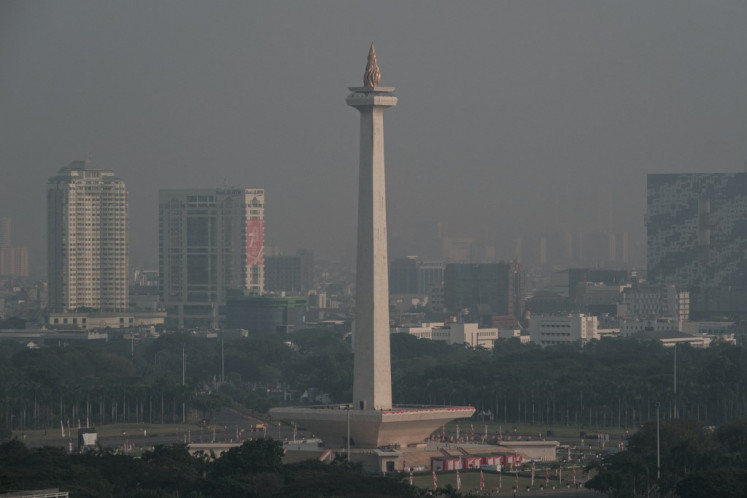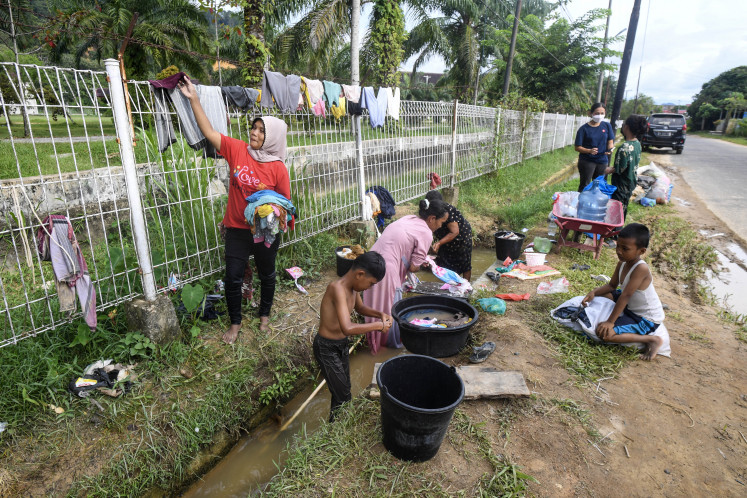Popular Reads
Top Results
Can't find what you're looking for?
View all search resultsPopular Reads
Top Results
Can't find what you're looking for?
View all search resultsAsian food security under +2 and +4°C climate change: IPCC assessment report 2014
The Intergovernmental Panel on Climate Change (IPCC) has partially published the final version of the Fifth Assessment Report (IPCC AR5) on global climate change
Change text size
Gift Premium Articles
to Anyone
T
he Intergovernmental Panel on Climate Change (IPCC) has partially published the final version of the Fifth Assessment Report (IPCC AR5) on global climate change. The March 31 draft of the Working Group (WG) II of the IPCC AR5 provides a comprehensive assessment of climate-change impacts, adaptation and vulnerability in many sectors, including food security.
Compared with the IPCC AR4 (2007), the IPCC AR5 (2014) discusses in greater detail the impact of climate change on food security and food systems.
The WG II AR5 highlights the impact of climate change on crops, fisheries and livestock production. Interestingly, food security and food prices have been discussed based on lessons from the 2007/2008 world food-price crisis.
The IPCC AR4 (2007) said that extreme climate and weather events would likely reduce food yields. It suggested that without proper adaptation, a 1-2°C local temperature increase was likely to cause about 10-15 percent reduction in yield. The adaptive capacity of the main food crops in the tropics will decline if the temperature increases more than 3°C. Similarly, some fish-related species in certain localities will become extinct as a result.
The IPCC AR5 presents the level of confidence based on evidence and scientists' agreements in three categories: high confidence, medium confidence and low confidence. Some of the findings listed below are classified as 'high confidence' under the IPCC AR5.
First, the effects of climate change on crops and food production are evident in several regions of the world. In addition, the negative impacts have outweighed the positive impacts of climate change. Second, high-latitude regions enjoy more positive trends while low- latitude regions (including the tropics) food systems are more likely to experience the negative impacts of climate change. Third, food security cannot escape the impact of climate change because all food systems are potentially affected, including food production, access, utilization and price stability.
The IPCC AR5 suggests that if countries adopt adaptive crop management measures, they can avoid losses from 15 to 18 percent of current yields. Even when effective adaptation occurs, local food systems are still likely to experience both positive and negative yields as a result of local temperature increases of about 2°C above pre-industrial. However, increases of 4°C and higher than pre-industrial might pose very significant risks and challenges to food security.
Asia, in particular, faces a serious challenge given the fact that 60 percent of the world's population lives there and the continent makes up 8.7 percent of the world's total surface area where land area is only 30 percent. In addition, according to FAO, Asia has the highest number of undernourished children in the world with 300 million located in South Asia.
A lack of adaptive measures and the interplay between future climate change and demographic dynamics in Asia could potentially create a complex and widespread food crisis in the region. The negative impact of climate change is likely to be worse in the vulnerable and impoverished regions.
Experts have found that extremely high daytime temperatures can be damaging to crops. The same effect was also seen as night temperatures increased. In the case of rice, the International Rice Research Institute (IRRI) found that warmer nights could have impacts on rice production and yields.
More drought, dry spells and reduced soil moisture contents manifest the climate extreme events that are likely to hit production regions. Recent dry spells in the Malacca Straits (Sumatra, Singapore and Malaysia) have caused a 60 percent drop in local fruit production, and prices went up significantly (The Star Online May 6, 2014). This exemplifies the simple relationship between climate, food production and food price volatility. The return period of world food crisis is usually every 30-40 years, however, under climate change, the return period of food crisis might occur every 5-10 years.
Data from the ASEAN Food Security Information System (AFSIS) suggests that during 2007-2013, total rice losses (due to climate-related events e.g. floods, drought and pest attacks) was 7.4 million ha (or about 25.2 million ton of rice). However, this data might actually be higher as Vietnam was not included.
Most AR5 studies only cover main food crops, including rice, wheat and corn. More research is required to include more crops. In addition, little has also been written regarding the food and climate change in Southeast Asia.
No governments seem to have a clear food security strategy to deal with +2°C to +4°C climate change. Therefore, in response to AR5, some recommendations for action to the policymakers in the region are in order and they include the following.
First, climate change will also affect non-production elements of food security (e.g. supply chain and access, utilization and food price). Research support in these areas may provide strategic options for climate adaptation.
Second, more governments need to build information systems on loss and damage under climate change and non-climate change factors. There should be more studies conducted on climate-change impacts on food commodities and secondary crops, including vegetables and fruits at national and local levels. This will increase higher predictability in food stocks for early detection of threats to price stability.
Finally, some of the knowledge, technology and raw materials (such as flood and drought resistant seeds) for adaptation are available. Governments and multilateral organizations are encouraged to speed up the adoption process to avoid unnecessary delays in climate adaptation.
__________________
Jonatan A. Lassa and Maria C.S. Morales are researchers at the Centre for Non-Traditional Security (NTS) Studies, S. Rajaratnam School of International Studies, Nanyang Technological University in Singapore.










